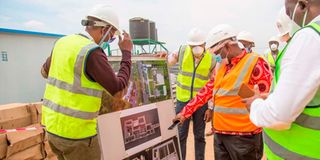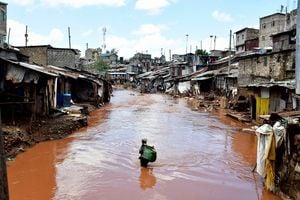Review Vision 2030 journey

Information PS Jerome Ochieng' (centre) views an artist's impression of the National Data Centre at Konza Technocity in Makueni County on July 20, 2020.
On June 10, 2008, then-President Mwai Kibaki launched a comprehensive economic blueprint — the Kenya Vision 2030. In 2030, the country would be an industrialising, middle-income economy providing a high quality of life. This was to be achieved through realisation of planned economic, social and political developments.
However, with its implementation lifespan past halfway, Kenyans are increasingly getting unsettled with the overweening emphasis being put on huge capital infrastructure projects than on the rest.
Implementation is an elitist venture with large incomes flowing to procurement businesses in the oligarchy. In 2014-2020, Kenya became a lower-middle income economy and was ranked highest globally in the increase of dollar millionaires, rivalling major economies like China and the US. Ironically, the World Bank predicts that over a fifth of Kenyans will still be below the poverty line in 2030.
Economic burden
Vision 2030 has overstrained Kenya’s capital capacity, subjecting the economy to a heavy debt burden with stalled projects. Rigorous infrastructural campaigns without a definitive economic gain have plunged nations into an irreversible depression that crippled the economy. A good example is the ‘Miracle of Africa’ in Cote d’Ivoire, during the 31-year reign of Felix Boigny.
As K. Ali Akkemik writes in Industrial Development in East Asia, rapid development is achievable through a joint adoption of macroeconomics and industrial policies. A linear growth in private investments would put the infrastructure facilities into economic use and expand revenue collection bases.
When Lee Kuan Yew identified Singapore Port as the single-most vital infrastructure project for his government, he wooed Western traders and assemblers to bring in their South East Asia bases.
Vision 2030 talks of expansion of agriculture, industry and services with industrial parks on the northern corridor and an agricultural scheme along Lapsset corridor. But there is nothing happening on that front.




